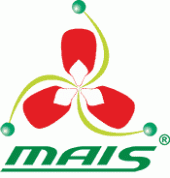An insect resistance management (IRM) plan is an important aspect of corn farming in order to protect the integrity and viability of biotech products. The vitality of an IRM plan was one of the topics of a learning session at the 2010 Commodity Classic. Before the introduction of biotechnology andinsect-resistant traits, insects were a major cause of crop damage and yield loss, and farmers often made multiple applications of chemical pesticides to combat insect pests. To protect the yield potential of plants, insect-resistant traits in transgenic plants using Bt (Bacillus thuringiensis), were developed. Crops with a Bt trait have been modified to produce a protein that is toxic to various forms of insect larvae. Bt proteins have long been used as topical sprays in conventional and organic agriculture because they are effective and can be used safely. Crops that are genetically engineered to carry the Bt trait allow farmers to protect their crops while eliminating or significantly decreasing the amount of pesticides sprayed. Given the benefits of the technology, it is very important to protect its viability with an IRM plan. IRM plans are used to decrease the likelihood of an insect developing the ability to survive pesticide application or the ingestion of transgenic crops containing the Bt trait. Planting a refuge, an area planted with non-Bt protected crop, is an essential part of an IRM plan. «IRM plans are based on a very simple idea,» said Ken Ostlie, entomologist at the University of Minnesota. «You have a refuge that’s producing insects that haven’t been exposed to the technology this generation. They move out of that refuge and mate with individuals that are exposed to that technology in the fields.» Resistance to a Bt trait is a recessive gene, so for the gene to be expressed, both parents must be resistant to the Bt protein. The presence of a refuge allows a non-resistant population to exist and to mate with any insect that may have developed a resistance - thus preventing the next generation from developing any resistance. Refuges are required by the Environmental Protection Agency (EPA) when planting Bt products. Refuges can be planted in a variety of patterns, from strips within the field or in an adjacent field. Refuge requirements vary depending on the Bt crop being planted and region of the country. The percentage of refuge acres varies based on specific geography, but historically the required refuge for Bt corn has been 20 percent in Canada and the U. S. Corn Belt and 50 percent in the U. S. Cotton Belt. Products that present a lower risk of resistance have lower refuge requirements. Genuity™ SmartStax™ has the lowest refuge requirement at 5 percent in the corn belt and 20 percent in cotton growing areas because it contains multiple modes-of-action (multiple Bt proteins) to act against the target insects. «Farmers are the real winners with Genuity™ SmartStax™,» said Robb Fraley, Monsanto chief technology officer and executive vice president. «The five percent refuge for SmartStax™ will give farmers a tremendous advantage to increase whole-farm corn yield 5 to 10 percent. This is a key early step in our commitment to helping farmers sustainably double yields by 2030 to meet the increasing demands for grain for food, feed and fuel. This reduced refuge will be easier for farmers and will further reduce insecticide use while reducing grower risks and enhancing the long-term durability of the technology.»
Agro Perspectiva





































































































































































